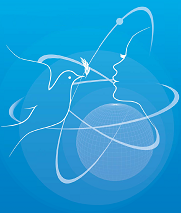Speaker
Goedele Sibbens
(EC-JRC-IRMM, European Commission)
Description
In the eighties it was not common for girls to study engineering. But a few young girls have always been fascinated by science and technical applications and dared to go for a gender untypical education. What are these female engineers doing today?
This paper describes the career development of a woman, who completed her Master of Science in Nuclear Engineering, found first a job in an international company as co-operator in the research group of radiation physics and later as head of technical support and quality assurance of medical systems and then succeeded in a competition to be recruited at the European Commission (EC). There she started as an assistant for the primary standardisation of radionuclides and high-resolution alpha-particle spectrometry including the preparation of radioactive sources in the radionuclide metrology sector at the Institute for Reference Materials and Measurements of the European Commission's Joint Research Centre and consequently published her work in scientific journals.
Today, 29 years later, I am the laboratory responsible for the preparation and characterization of nuclear targets at EC-JRC-IRMM, leading a team that has unique know-how in the preparation of thin film deposits (called targets) tailor-made for nuclear physics measurements at the EC-JRC-IRMM and international accelerator sites. High quality measurements of nuclear data and materials are being asked for in the context of nuclear safety, minimization of high level nuclear waste and safeguards and security. The different steps of my career development and the repeated process of managing learning, work, family and leisure are presented. The career path across different jobs and responsibilities and the career progress via a certification training program are also explained to encourage the next generation of female professionals to continue playing a vital role in nuclear science and technology.
| Country or International Organization | EC-JRC-IRMM |
|---|
Author
Goedele Sibbens
(EC-JRC-IRMM, European Commission)

